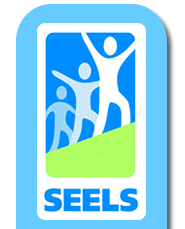

SEELS design, timeline, data collection and sampling plans, instrumentation, and analysis strategies were designed by SRI International, with the assistance of a task force of study constituents, and a technical advisory panel. SEELS design elements include:
Sample. SEELS involves a large, nationally representative sample of students in special education who were ages 6 through 12 in 1999. Students were selected randomly from rosters of students in special education provided by local education agencies and state-operated, special schools for the deaf and blind that agreed to participate in the study. Statistical summaries generated from SEELS will generalize to special education students nationally as a group, to each of the 13 federal special education disability categories, and to each single-year age cohort.
Conceptual Framework. The SEELS conceptual framework that guided the study's content was informed by a task force made up of representatives of many of the groups that would be interested in the results of the study, including parents, general and special educators, related service personnel, researchers, and policymakers at the federal, state, and local district levels.
Data Collection Instruments. Information about students is collected repeatedly as they transition from elementary to middle school and from middle to high school. Given the broad range of topics that the conceptual framework encompasses, information for each student is collected from a variety of sources, including parents/guardians, teachers, principals, and school records, and students themselves.
Parent/Guardian Interview. A telephone interview with parents/guardians focuses on student and family characteristics, nonschool activities, and satisfaction with school programs. Teacher Survey. Teachers who provide language arts instruction to SEELS students are given surveys about students' classroom experiences, instructional goals, assessment, accommodations, social adjustment, and educational progress. School Program Survey. School personnel who know the students' programs well are given surveys about students' overall programs, placements, and educational progress. School Characteristics Survey. School Coordinators, principals, or their designees are given surveys about district and school policies, practices, and reform efforts. Direct Assessment. A direct assessment includes measurements of students' reading and math skills, self-concept, and attitudes about school. Transcripts. Transcripts are collected once students reach secondary school to learn about patterns in the types of courses students take. Data collection instruments are designed to include items in national databases for the general student population in order to permit appropriate comparisons between SEELS students and those in the general population of students of the same ages. Data collection and other design activities also are being coordinated with those of other studies associated with OSEP's National Assessment of IDEA 97. For more information about IDEA-sponsored studies, visit the Links page.



